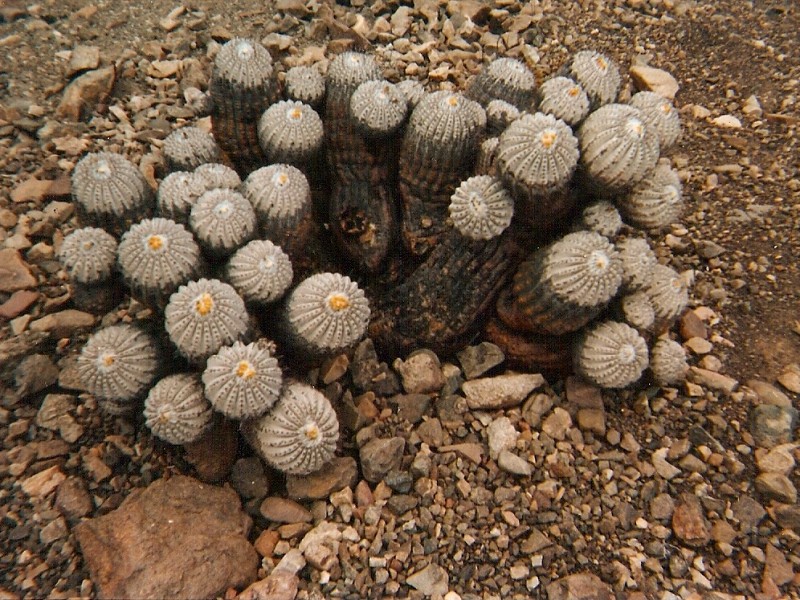

2005, Chile, II Región de Antofagasta
2005, Chile, II Región de Antofagasta, Taltal, A&M 46 Show on map
2005, Chile, II Región de Antofagasta, Taltal, A&M 46 Show on map
Synonyms
Copiapoa cinerea ssp. cinerea, Echinocactus cinereus*, Copiapoa albispina, Copiapoa eremophila, Copiapoa gigantea, Copiapoa cinerea ssp. gigantea, Copiapoa haseltoniana, Copiapoa cinerea ssp. haseltoniana, Copiapoa krainziana, Copiapoa cinerea ssp. krainziana, Copiapoa tenebrosa
* Basionym
Distribution
Chile (II Región de Antofagasta)
Conservation status
Comments
We agree with Graham Charles on the fact that among the Copiapoa, Copiapoa krainziana F. Ritter, is the most recognizable (Hunt et al. 2006, text: 55), and if we had not been in the Quebrada San Ramon, we would also agree that Copiapoa cinerea (Philippi) Bitton & Rose, Copiapoa haseltoniana Backeberg, and C. krainziana, are distinct. Two hypotheses can be made, following what we could observe.
The first is that C. cinerea and C. haseltoniana, that already interbreed with each other giving rise to hybrids, as already noted by Backeberg (1966 / en. ed. 1977, 107), also interbreed with C. krainziana which lives in the highest part of the quebrada, creating a population with the characteristics of the three. The second hypothesis is that C. cinerea (including C. haseltoniana), through various stages of transition, results at the end in the altitudinal form known as C. krainziana; such assumption have already been taken into consideration (Hunt 2002, 13: 14; Hunt et al. 2006, text: 55). It is our opinion that both roads lead in the direction of a single species. (Quoted from Anceschi & Magli 2010, 29-30)
Genus
Other species